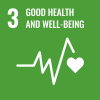Sinjar, 19 August 2022 – On 3 August 2014, the Islamic State of Iraq and the Levant (ISIL) launched its offensive in Sinjar – the ancestral homeland of Iraq’s Yezidis, a Kurdish-speaking ethnoreligious minority that has historically faced marginalization and persecution. Thousands were killed during ISIL’s campaign of terror. Thousands more were forced to flee to the nearby Mount Sinjar, where many died of exposure on the side of their sacred mountain.
Eight years on, the question remains: how does a community heal?


Sinjar old city. Photo: IOM 2022/Sarah Gold
Today, the old city in Sinjar is in complete ruin, with only remnants of its once-vibrant life – an empty can of marinated grape leaves, a strewn deck of worn playing cards, a young child’s beloved blanket – scattered in the rubble.
Survivors’ lives have been irreparably changed by unimaginable horrors. Mass executions, forced conversions, abduction and enslavement, systematic sexual violence and other heinous acts perpetrated by ISIL reflect a genocidal effort to destroy the Yezidi community.

Reburial ceremony in Kocho, Sinjar district. Photo: IOM 2021/Raber Aziz
Survivors – including Yezidis, but also members of the Shabak, Turkmen and Christian minorities – are unable to mourn lost family members, friends and neighbours, many of whom lie in unmarked and mass graves still awaiting exhumation.

Sinjar old city. Photo: IOM 2022/Sarah Gold
"The scale of the atrocities committed against the Yezidi community is such that it will have an impact on generations to come. The Government of Iraq and the international community need to create conditions that will assure Yezidis that such atrocities will not happen again, and support them in healing and rebuilding their lives,” says Sandra Orlovic, Reparations Officer with the International Organization for Migration (IOM) in Iraq.

Home in Sinjar old city. Photo: IOM 2022/Sarah Gold
Yezidi activists and civil society organizations have been working relentlessly to achieve safety and meaningful justice for their community, with groups like the Yazda-established Yezidi Survivors Network dedicating themselves to survivor-led self-determination efforts; promotion of accountability and the protection of human rights; and advocacy for survivors' services.

Kabarto Camp for internally displaced persons, Dohuk Governorate. Photo: IOM 2021/Raber Aziz
“I want the Iraqi government to take ownership of us as Iraqi citizens and support us financially so I can bring up my children with dignity,” says one Yezidi internally displaced person (IDP) living in Duhok.
Women face particularly complex barriers to livelihood opportunities and financial independence – a problem made more dire by the high number of female-headed households resulting from the genocide. Yezidi civil society and community-based organizations have been hard at work reviving businesses and advancing Sinjar's reintegration into Iraq’s markets.

IOM Iraq workshop with survivors of conflict-related sexual violence. Photo: IOM 2019/Anjam Rasool
In March 2021, Yezidi activists and civil society, with support from IOM Iraq, other international organizations and government partners, achieved a major milestone: the Iraqi Council of Representatives adopted the Law on Yezidi Survivors, officially recognizing ISIL’s acts of genocide against Yezidis and other minority groups and establishing a framework for the provision of financial support and other forms of reparations to survivors. These include a monthly salary, shelter and education assistance, access to health and mental health services and more.
The newly established General Directorate of Survivors’ Affairs is tasked with implementing the law.

Informal site in Khanke, Dohuk Governorate. Photo: IOM 2021/Raber Aziz
“The General Directorate of Survivors’ Affairs has been opened in Mosul, and we are about to open a branch in Sinjar district in the next few days with the support of USAID and Nadia’s Initiative,” says Sarab Alias, the Directorate’s Director General. “The Directorate is working intensively and with all efforts to start the process of registering the survivors.”
For this, she continues, “[The Directorate] needs concerted efforts and support from all parties – both governmental and international, [as well as] international and local civil society organizations.”

Sinjar old city. Photo: IOM 2022/Sarah Gold
Despite ground-breaking progress over the last eight years in support of survivors of ISIL’s genocide, healing and rebuilding will take time.
The question remains: how does a community heal after experiencing genocide? There are no clear-cut answers to this question, but investing further in building the capacity of Yezidis, Shabak, Turkmen and Christians leading the charge is a vital first step.

IOM Iraq consultation with Yezidi families in Qadia camp about the construction of new housing and memorials in Kocho, Sinjar district. Photo: IOM 2021/Yad Abdulkader
*Names of survivors have been omitted to protect their identities
Written by Sarah Gold, Media and Communication Officer, IOM Iraq



